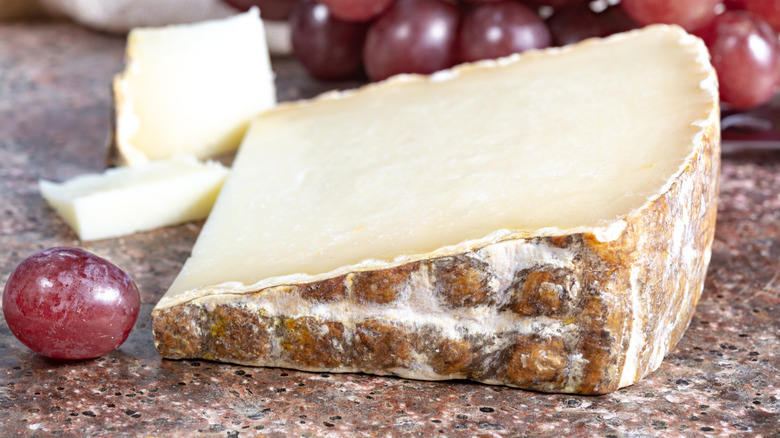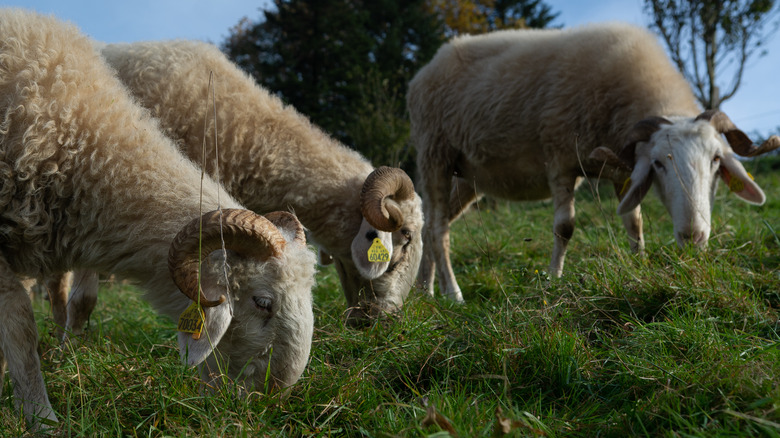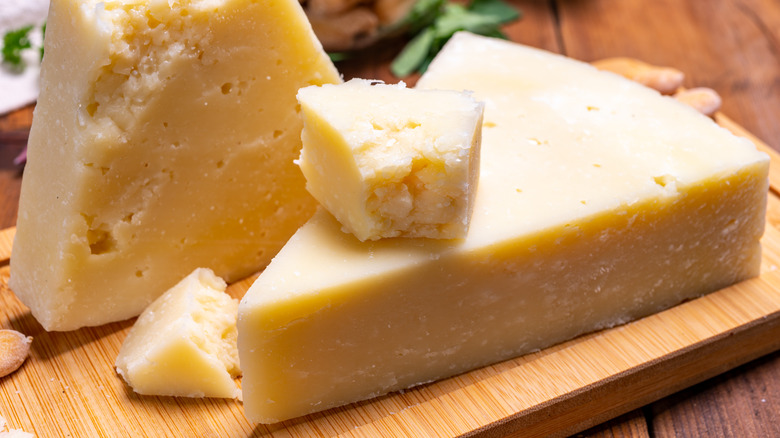Why Sheep Cheese Is So Hard To Come By In The US
If you're looking for some decadent cheese to adorn your well-organized charcuterie board, you may find yourself curious about sheep cheese. While goat and cow milk cheeses are pretty commonly eaten, sheep cheese is a little harder to find.
Compared to other cheeses, sheep cheese can be a little sweeter and richer, though it is mildly flavored. This may be because sheep tend to prefer eating sweeter grasses, so the resulting milk and cheese will wind up a little richer than cow or goat cheese, which comes in a variety of types and textures. Unfortunately, if you live in the United States and want to taste test sheep cheese, you may also need to be a little richer in terms of money.
It can be pretty difficult to come by sheep cheese in the United States. The cheese is difficult to produce in large quantities, so the lack of potential profit may deter some cheesemakers from venturing into sheep cheese production. While not totally impossible to find, you may need to visit a specialty cheesemonger to find some. The lack of mass production is due to the fact that you just can't get as much milk from sheep as you can from goats and cows.
Milk production is a major challenge for the cheese
Part of the reason it's so hard to produce sheep cheese is because it's difficult to obtain milk from the sheep in the first place. Lactation only lasts about 100 days for sheep. And, even when they are producing milk, sheep can only produce about half a gallon per day. By comparison, dairy cows can make an average of six to seven gallons everyday, while goats can produce anywhere between ¾ to 1 ¼ gallon per day. Sheep's milk is blue zone approved, and it contains less casein than cow's milk, meaning it's safer for people who are sensitive to dairy.
Even the amount of light that sheep receive can impact how much milk they make. While half a gallon isn't a lot to begin with, less light and colder temperatures may cause sheep to make even less milk. Fortunately, for farmers who are really dedicated to producing sheep cheese, there is a way to offset this challenge.
Extra light, even artificial light from lamps, could help sheep produce more milk, as evidenced by a 2008 study published in the Journal of Dairy Science. Still, this could cause excessive energy bills to produce smaller quantities of cheese — which means even smaller profit margins.
Sheep cheese could cost you a little extra
If you do manage to find sheep cheese, you can expect it to cost you a little bit more than goat or cow varieties. Brebis d'Ossau, for example, is a sheep cheese featuring slightly nutty, fruity flavor notes. A pound of the cheese costs around $36. Ossau-Iraty cheese is also mildly nutty and will run you about $42 per pound. Although these prices may seem steep, they account for the time and flock size required to produce the cheese and still churn out a profit.
One more easily accessible sheep cheese is Manchego. The semi-soft, slightly fruity cheese is produced in Spain and can cost around $19 per pound. Although this is still more than your standard block of cheddar might cost, it's certainly less expensive than other varieties of sheep cheese. And, it can make for a deliciously rich addition to your mac and cheese with fresh chorizo. Other types of sheep cheese include Roquefort, Pecorino Romano, queso roncal, and Pecorino Toscano.
While sheep cheese might be a decadent addition to your next charcuterie board, you may want to save your slices for more extravagant events. Since it's difficult to obtain large quantities of sheep milk needed to produce the cheese, it's unlikely that sheep cheese will become a regular, affordable serving on the table.


